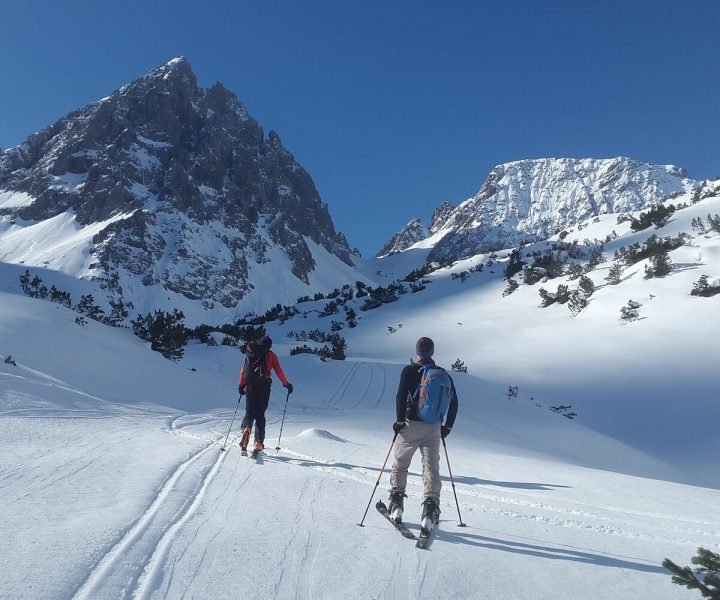
Backcountry skiing covers a wide range of types of skiing, including randonnée, ski mountaineering, freeskiing and alpine touring. At its core, backcountry skiing means that you will not have the assistance of a lift, and you’re the one responsible for getting to the top of whatever you’re planning on racing, floating or carving.
The descent is made all the more satisfying as you’ve powered yourself through the ascent, but it means that there are some factors you need to take into consideration when you’re choosing a backcountry ski, including your weight, the terrain, and the conditions of the snow.
Some questions to ask yourself before taking the plunge and buying your gear are the following:
- What is your preferred backcountry skiing style?
- What type of terrain and snow do you ski?
- What length and width do you need?
Backcountry skiing style
Skis built for backcountry skiing are defined using a variety of terms, including:
- AT or Alpine Touring: These are designed for a variety of terrains, and are considered do-it-all skis.They perform well in icy, soft, or heavy snow, and work for day tours as well as more extended tours.
- Freeskiing and freeride: They are designed for big drops and sharp turns, as well as being able to float in powder. They’re lighter than downhill skis, but if you are interested in touring, they may be too heavy.
- Ski mountaineering: Manufactured to go fast and far, and they’re commonly narrow and light.
Snow and terrain
Are the conditions mixed where you want to ski, or are you blessed with deep powder? The conditions in your area will help you narrow down what you need to look for.
Powder: If powder is the norm where you ski, you need to browse for skis with a proper flotation width, anything from a 100mm waist to a 120mm waist. They won’t have the same speed in harder snow, but you will be stable in deep snow.
Mixed snow conditions: You’ll typically encounter these conditions if you spend more time on packed runs or trails, and you’ll need more width. Look for skis that have a waist width of around 90mm, which will give you a good edge and performance on hard snow, and offer you stability in unpredictable or deep snow.
Length
Backcountry skis are normally a little wider and shorter than downhill skis. They have been designed to be relatively easy to control, float through mixed snow conditions and be able to handle technical situations.
If you are a heavier skier, you should size up, and size down if you are a lighter skier. Beginners should look for skis that are 10cm below their height; intermediate skiers need a ski that is 5 cm below their height, while advanced and expert skiers need to look for either their height or 5 cm above.
 Your Privacy Choices
Your Privacy Choices